As a scientist, I dislike anthropomorphizing the birds I study. Most of the time I can easily argue away their near-human behavior. But there are a few species that, for their intelligence, appealing behavior and association with humans, are just exceedingly likable. Lacking a good scientific term, I think I’ll just call them friendly birds.
Meet the top 12 cutest birds in America.
Cheery Chickadees
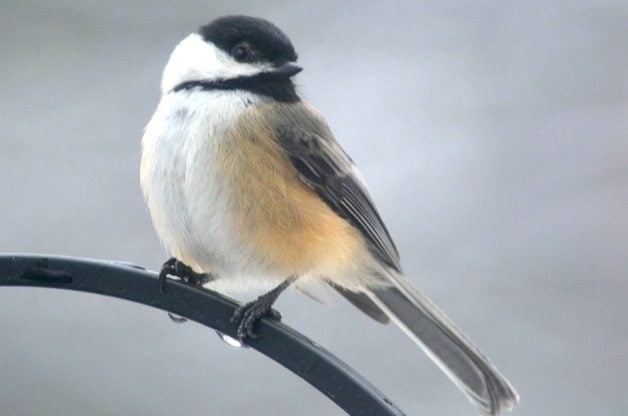
The first group of friendly species is the chickadees. They frequent our yards and feeders so often that they would be impossible not to include. Seven species of chickadees are found in North America. One, the gray-headed chickadee, occurs only in Alaska, and even there requires so much searching that most Alaskan birders, including me, have never seen one.
Five species are regional. Carolina chickadees occur in the Southeastern United States. Boreal chickadees are limited to the boreal forest that covers the northern portion of the continent. Mountain chickadees are found in the Rocky Mountains, Mexican chickadees occur only in the far southern tip of Arizona and New Mexico, and chestnut-backed chickadees are found in the Northwest. Only black-capped chickadees occur across the whole of North America.
All the chickadee species share some traits, the most notable being their bold and inquisitive nature. They do not seem to fear, well, anything. I’ve watched a chickadee on a cold winter day fly down and land atop my ski pole as I paused along the trail. That bird eyed me with some curiosity before letting loose a scolding Chick-a-dee-dee! and returning to the branches above.
A friend who helped teach me about birds once told me, “If chickadees were as big as jays, nobody would go into the woods.” He may well be right. It seems counterintuitive, but to me it’s their boldness and courage that make them seem so friendly.
Discover the top 9 most beautiful birds in America.
Neighborly Nuthatches

Nuthatches are just too endearing not to be included in this group of friendly birds. North America has four nuthatch species: the brown-headed nuthatch of the Southeastern U.S., the pygmy nuthatch of the pine forests of the mountain West, the red-breasted nuthatch of the boreal forest and the higher elevations of the western part of the country, and the white-breasted nuthatch, which is distributed across most of the Lower 48 states.
As a group, they are as bold as chickadees, but without the attitude, often flying right up to a feeder even as it’s being loaded with seeds or peanut butter. They will perch vertically, upside down, on a tree trunk and wait patiently for their chance at the treat. In fact, it is this trait—their ability to perch head down on a vertical surface—that distinguishes them from all other species of birds. When not visiting feeders, they derive a good portion of their food from the insects hiding beneath the scales of tree bark. Their unique ability to scale up and down the trunk of a tree is a perfect strategy for such a search.
Check out the top 12 tips to attract birds to your feeders.
Nutty Nutcrackers

While several species of corvids—the family that includes crows, ravens and jays—are friendly, one group has earned the nickname of camp robber. Clark’s nutcrackers are the quintessential avian thieves. If you’ve picnicked or camped in the high conifer forests of the Rockies, you’ve probably encountered a Clark’s nutcracker. They appear almost magically from the forest, somehow knowing where there’s food to be found.
They are large gray jays with black wings, white outer tail feathers and intelligent dark eyes. Their main food source, apart from the opportunistic theft from camper’s backpacks, is the seeds of pines. In fact, they are so closely tied to pines that several species of conifer trees, including the whitebark pine and the southwestern white pine, depend almost entirely on the Clark’s nutcracker for seed dispersal.
They have an uncanny memory that can store the locations of thousands of seeds, which they cache as the pinecones ripen. That memory and the ability to acquire food are attributes I’d choose in any friend.
Discover 8 types of jays you should know.
Splendid Sparrows

The last species, the white-crowned sparrow, I include for personal reasons. In Alaska, they are among the most abundant songbirds during the spring and summer. I conduct a lot of field research, and whether I’m searching for nests in the boreal forest or surveying birds in the high alpine ridgetops, I am rarely out of earshot of a singing white-crowned sparrow. I’ve had them sing from the top of my tent as I camped in the tundra, and had freshly fledged juveniles land on my boot while I rested during a hike. It must be their constant presence in my life that makes me see them as friendly birds.
These species, more than many others, have chosen to associate with humans. They seem to like us. And, for me, that feeling is mutual. Their antics, courage and intelligence are striking, memorable and entertaining. And, like good friends, they are always around when I need them.
Next, learn 15 common backyard birds you should know.
Northern Cardinal
Northern cardinals are commonly spotted across the eastern half of the United States, and also show up as far west as Texas, New Mexico and Arizona, and in Mexico. They are the most well-known of the types of cardinals for most U.S. birders. Males have vibrant red feathers, which gives the species the nickname, “red birds.” Female cardinals are more muted in color, mostly brownish with red accents. Some lucky birders have even spotted rare yellow cardinals and leucistic or albino white cardinals.
You can attract cardinals by offering their favorite types of bird seed in cardinal feeders. These birds do not migrate, so you can see them in your yard year-round. Pairs form close bonds and often mate for life.

“I took this picture of a hungry northern cardinal (above) in my backyard. I love this picture because I got to watch him and his lady all year long. They even have a baby cardinal. I feed them every day,” says Birds & Blooms reader Katie Buchanan of Salina, Kansas.
Don’t miss magical bird photos of cardinals in snow.
Pyrrhuloxia

This cardinal-look alike is commonly known as the desert cardinal. To spot one of these types of cardinals in North America, you’ll have to visit the southwestern United States or Mexico. Pyrrhuloxias eat seeds, insects, berries and cactus fruits. Like northern cardinals, these birds do not typically migrate. They are primarily gray with red accents; males have a red mask and belly.
What does a cardinal song sound like?
Red-Crested Cardinal

If you want to see these stunning types of cardinals, you’ll need to book an island vacation. Red-crested cardinals are typically only found in Hawaii and Puerto Rico, as well as in South America. While it’s clear that these gorgeous crested birds do resemble northern cardinals, with their dark gray and white feathers and solid red heads they also somewhat resemble red-headed woodpeckers! Their diet consists of seeds, fruits and insects.
Next, find out if cardinal sightings have special meaning.
When your favorite houseplant is bursting at the seams of its pot, it’s time for a big move with big perks. Erin Marino of thesill.com says repotting has two main benefits: “It provides your plant with fresh potting mix and more space to grow.” Here’s how to repot an indoor plant; use Erin’s easy tips to provide your plant with a new home. Plus get specific advice for repotting orchids.
How Often Should You Repot Indoor Plants?
Smaller plants need a refresh about every one to two years, though Erin notes that larger or slower-growing plants, such as ficus trees and cactuses, can sometimes go as long as three years.
Once you’ve learned how to repot a plant, discover how to water your indoor plants the right way.
Signs That Your Plant Needs Repotting
The most obvious clues that it’s time to repot are roots coming through the drainage holes or pushing the plant up and out of the pot. If your container no longer seems to hold much water or if the plant stops growing in its non-dormant season, it’s probably time for a change too.
Already mastered repotting plants? Get more indoor-plant indoor plant growing tips from real gardeners.
How to Choose the Right Size Pot
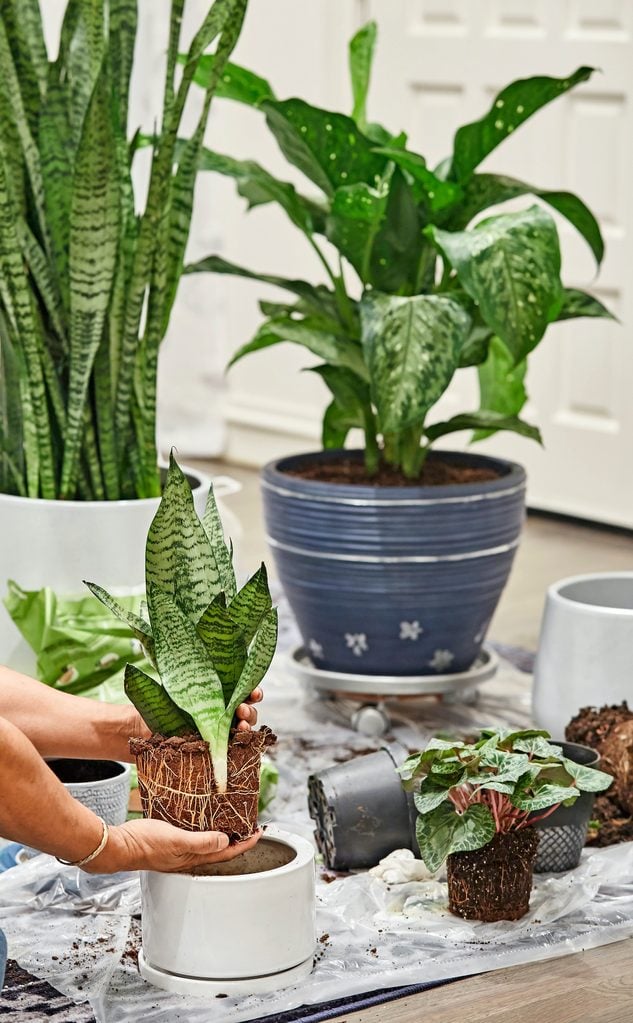
“It may be tempting to opt for a big pot, but don’t!” says Erin. “The larger the planter, the more water we tend to give it. This can very easily lead to overwatering, which causes root rot.” Choose a container slightly larger than your current setup—up to 2 inches wider in diameter for smaller plants. Only slightly increase the size of the pot when replanting houseplants such as snake plants. Always make sure your pot has adequate drainage holes.
We think you’ll love these unique succulent pots and planters.
Always Use New Potting Mix
Plants slowly use up the nutrients in potting mix and need new soil to thrive. Use new soil when moving a plant from pot to pot.
Learn how to get rid of indoor plant bugs.
Simple Steps for Repotting Indoor Plants
- Turn your plant sideways and gently hold it by the stems or leaves. Tap the bottom of the pot until the plant slides out.
- Loosen the roots with your fingers. Prune off any extra long, threadlike roots and unbind the roots growing in tight circles.
- Add a shallow layer of potting mix. Settle your plant so its crown sits at the same level and fill with more soil. Don’t pack it too tightly, because you want the roots to have plenty of room to breathe.
- Water your container thoroughly and ensure it drains properly. Do not apply fertilizers now. “That would be nutrient overload,” Erin says. Now your houseplants are ready to spread their roots and keep on growing.
Check out 15 indoor plant stand options for every houseplant.
How to Repot Orchids
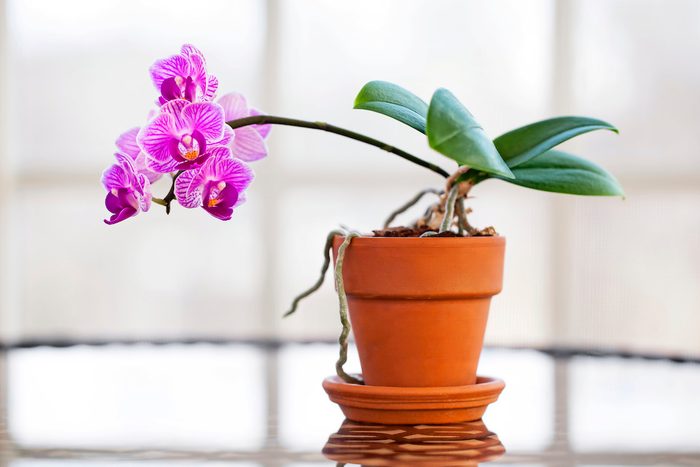
Tropical orchids are popular, long-lasting, blooming houseplants. They’re easy to move into a new pot if you keep these orchid repotting tips in mind.
- Use only orchid-specific potting mix.
- Wait until the blooms are spent before moving.
- Avoid breaking the roots, but prune any blackened ones with sterilized pruning snips.
- Use support clips to steady the orchid if the new lightly packed soil doesn’t hold it in place.
Next, learn how to tell if your jade plant needs repotting.
You spotted a woodpecker with a red colored head. Which woodpecker did you see? Study these clues so you can tell the difference between a red-headed woodpecker vs a red-bellied woodpecker.
Discover 14 mind-blowing woodpecker facts you should know.
Red-Headed Woodpecker

The red-headed woodpecker is a stunning, medium-sized bird with bold black and white coloring, like a checkerboard.
- Head Unmistakably red, covering the entire head and neck on both males and females.
- Body White underneath and black on top, with a thick white wing stripe.
- Range Year-round in the East and the southern plains, spreading to northern plains and southern Canada in the breeding season.
- Call Very high-pitched and hoarse tchur.
Check out the 8 best woodpecker bird feeders for your yard.
Red-Bellied Woodpecker

The red-bellied woodpecker confuses many new birders because this species also has red coloring on its head. Red coloring on the belly is harder to see at first glance.
- Head Males have a red mohawk while females have a red patch on the front and back of the head.
- Body Pale red-tinted belly with zebra-print wings and back.
- Range Similar to red-headeds, but nonmigratory and extending slightly more south. Found in Florida and the Gulf Coast year-round.
- Call A buzzy, high-pitched kwirr or churr.
Meet the large, red crowned pileated woodpecker.
Almost Two of a Kind

While there are key differences in these birds, there are also notable similarities. These two types of woodpeckers are virtually the same size, have striking red accents, fly in the same undulating pattern and catch insects by drilling into dead or decaying trees.
Next, learn all about the white-headed woodpecker and how to tell the difference between a downy vs a hairy woodpecker.
Since the early 2000s, the emerald ash borer has been a thorn in homeowners’ sides—or anyone with trees in their yard. These invasive insect pests cause oft-catastrophic damage to ash trees, and plenty of people have been forced to replace trees the borers killed. Here’s how to tell if the ash trees in your yard have emerald ash borer damage, and what types of trees you might consider replacing them with.
Psst—If you find a spotted lanternfly in your yard, this is what to do.
Emerald Ash Borer Damage
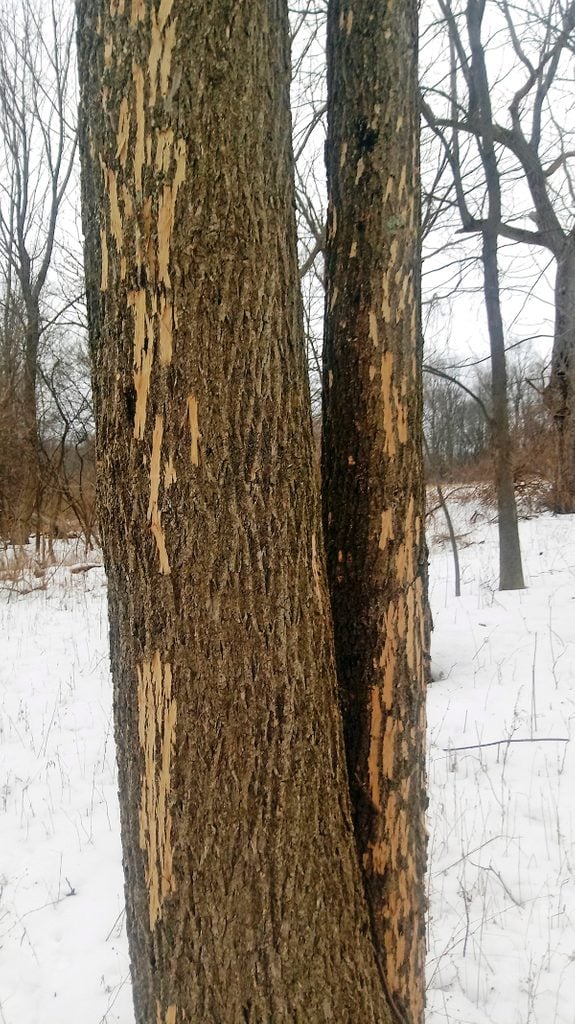
“Is this tree damage the work of a woodpecker?” asks Birds & Blooms reader Christine Atkins.
Birding experts Kenn and Kimberly respond, “Unfortunately, the marks displayed on your tree were not caused by a woodpecker or other bird. The tree appears to be an ash, and the damage is a good match for the “blonding” that results from emerald ash borers. (If you do have trouble with woodpecker damage, here’s how to stop them from pecking.)
“These beetles are native to Asia and have caused the destruction of millions of ash trees in North America. The bad news is that once the damage reaches this level, the tree will likely die. We suggest contacting your local extension office to confirm the presence of emerald ash borers and for information on removal,” the Kaufmans say.
The Arbor Day Foundation recommends monitoring your ash trees for these symptoms: thinning or dying crowns, suckers, splitting bark, tunneling under the bark and D-shaped exit holes.
Learn what you should do about 10 common tree diseases.
Replacing Damaged Ash Trees

“I lost a hedgerow of ash trees to Emerald ash borer damage. I was going to replace them with osage orange trees, but do you have any other hardwood recommendations? asks Birds & Blooms reader Lynn Taylor.
Garden expert Melinda Myers says, “Consider using a mix of trees. Creating diverse plantings reduces the risk of an insect or disease destroying all of the plants. Osage orange trees are durable beauties, but they do produce grapefruit-size fruit when mature. Hackberry grows 40 to 60 feet tall, has a vaselike habit and yellow fall color.
A variety of maples, including Miyabe and trident, have interesting bark and fall color. Turkish filbert tolerates drought, has an attractive pyramidal shape and produces edible fruit once it’s mature. Male clones (branch cuttings) of Amur cork tree, such as His Majesty, Macho and Shademaster, are adaptable, have corky bark and yellow-bronze fall color, and do not produce messy fruit.”
Next, learn how to control a Japanese beetle infestation.
Ornamental grasses are always an excellent selection for winter and fall interest. And if they offer benefits for your favorite feathered friends, even better! Purple fountain grass is one such plant—with its lovely coloring it’s a great choice for your garden, and birds love it, too. Here’s why this grass is an ideal addition to your backyard.
Purple Fountain Grass Care and Growing Tips
In warmer zones, drought-tolerant purple fountain grass keeps its eye-catching maroon color through winter. But in areas where it’s not hardy, leave it standing to lend structure, movement and texture to your landscape.
Psst—learn when you should cut back ornamental grasses.
Warmer climates may grow it as a perennial, but in cooler zones, this grass is considered an annual. It bursts with burgundy flower stalks from July to October. It also tolerates air pollution and grows near black walnut trees. The plant is not native but also rarely reseeds, so it’s safe for most backyards, forming a dense but contained clump.
- Botanical name: Pennisetum sataceum ‘Rubrum’
- Zones: 9 to 10
- Light needs: Full to part sun
- Size: Up to 4 feet tall and wide
These are the best perennial ornamental grasses to add to your yard.
Purple Fountain Grass Benefits

It’s simple to embrace easy gardening with this gorgeous plant, and best of all, the birds will thank you for it. If you leave the flower spikes alone through winter, you’ll soon find that backyard birds enjoy eating the seeds.
Unlike your feathered friends, deer tend to ignore it. That makes it ideal for those looking to add deer-resistant plants to their landscapes.
Where to Buy Purple Fountain Grass
In-season, check for fountain grass at your local plant nursery. For those wanting to order online, Home Depot also offers the plant in 2.5-quart containers.
Next, check out the top 10 purple flowers to grow in your garden.
All About Holly Berries and Trees

Whether you’re looking for a cultivar to stun year-round, a berry-producing powerhouse to beckon berry-loving birds, or a natural hedge to create some privacy between you and your neighbors, hollies feel at home in any landscape. Additionally, of all the decorations we hang in the winter months, holly has one of the longest and most interesting histories. Find out which holly trees are best for attracting birds. Plus, learn a few fascinating facts about holly berries and trees, too.
Discover 7 fun facts about Christmas trees.
Holly’s Festive Past
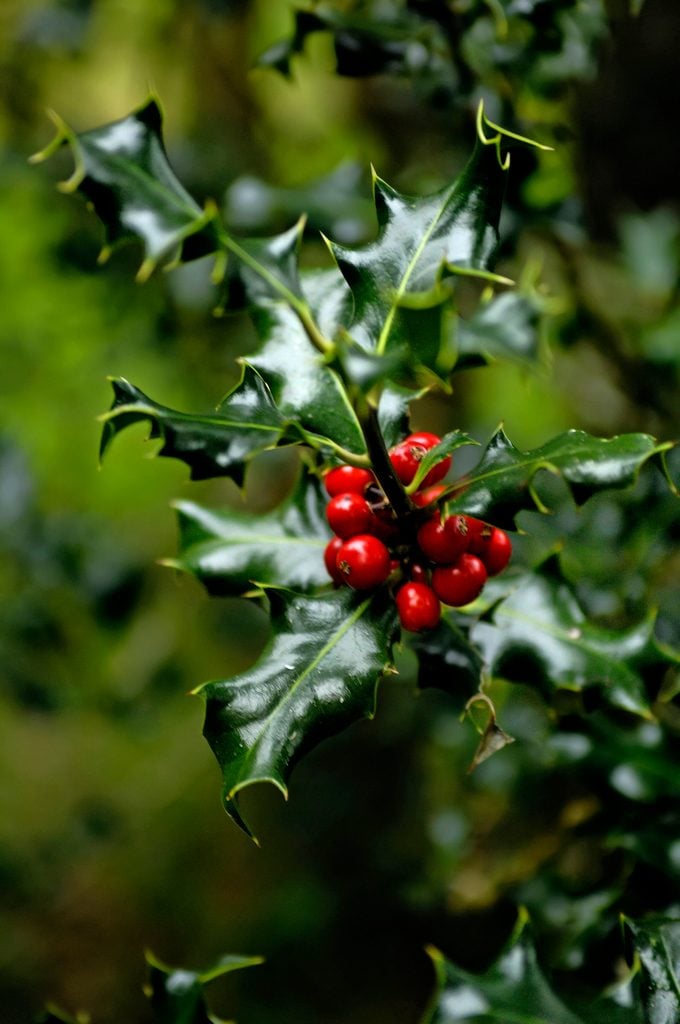
From ancient winter solstice celebrations to modern-day holiday decor, holly has been a part of our festivities for thousands of years. Long before Christians used holly to decorate their homes and churches at Christmastime, other cultures brought holly branches in to brighten things up in the winter.
Druids used holly as part of their winter solstice celebrations at least two thousand years ago. Reportedly, they believe that the Holly King, having defeated the Oak King, rules over the darker winter months. (In the summer, the Oak king rules triumphant once again.) Romans associated holly with Saturnalia, celebrated around the same time. As Christmas became more popularly celebrated in the winter, holly naturally became a part of the festivities, as well.
With its glossy green leaves that promise evergreen beauty and its bright red berries—technically drupes—English holly (Ilex aquifolium) is the plant best known for decking our halls and brightening up winter’s dark days. It is native to Europe, Asia and northern Africa and invasive in some parts of the United States. But, with so many wonderful native hollies, you have no need to plant English holly.

Did you know: A Christmas carol, “The Holly and the Ivy” tells the story of Christ. Although most of us only know the song’s first verse (“The holly and the ivy / When they are both full-grown” / Of all the trees in the wood / The holly bears the crown”) the later verses draw parallels between the thorny leaves and the crown of thorns Christ was said to wear, the bitter bark and his suffering, and so on. The holly referred to in the song, by the way, was English holly.
Psst—we love this Scandinavian Christmas tradition for the birds.
There Are Heaps of Holly Tree Varieties

Holly varieties grow across the globe. With more than 400 species belonging to the genus Ilex, hollies thrive in tropical, subtropical and temperate zones. They share a few traits. “All hollies attract beneficial insects and pollinators in the spring when they bloom,” says Sue Hunter, who serves as president of the Holly Society of America. “The flowers on both male and female hollies have a strong, pleasant fragrance.”
In the U.S., you’ll generally find them growing in zones 6 to 10, with many native species available in most areas. (For those who think they live too far north to grow holly, look into the so-called “Blue Hollies,” a hybridized group said to be hardy to zone 4.)
Check out the top 10 easy-care holiday houseplants.
Expert Tips on How to Grow a Holly Tree

Sue says that most evergreen species of hollies are drought resistant, though American holly (I. opaca) in particular is tough. “Once established, hollies require little care,” she says. “Fertilizer can be applied in the spring or fall once plants are dormant, and pruning is done during the winter months.”
Fruit-producing hollies are usually female plants that must be pollinated by a nearby male for berries. Be sure to include one or more males for every five females, depending on the type. If you need a male plant to pollinate a female, consider Jim Dandy for early blooming and Southern Gentleman for late blooming plants.
Garden expert Melinda Myers says, “Make sure you have the right growing conditions. Hollies prefer moist, acidic soil, and evergreen hollies need shelter from winter’s cold winds and bright sun, which can both have a drying effect.”
Benefits of Growing American Holly

American holly is a native evergreen tree that naturally grows in deciduous forests in the central and southeastern U.S. It reaches 40 to 60 feet tall and grows in a conical shape that’s pleasing in larger landscapes from Zones 5 (with protection) to 9. American holly is also known for being resistant to wind, salt spray and deer. It is rather low maintenance, growing in either part shade or full sun. While it prefers acidic, moist yet well draining soil, it tolerates a range of growing conditions.
Recommended American holly cultivars include the heavy-fruiting Miss Helen; Dan Fenton with its large leaves and bright red fruit; Goldie, which offers eye-popping yellow fruit; and Jersey Princess with its dark, glossy leaves.

Beyond being a host plant for Henry’s elfin caterpillars, American holly also attracts butterflies and bees that swarm its greenish white flowers. Birds flock to the female plant’s bright red or orange fruits that persist through winter. Even its gray-white bark, spotted with striking red or tan lichens, garners attention. American holly’s matte leaves distinguish it from its English cousin.
Learn how to care for a Christmas cactus and help it bloom.
More Top Native Holly Picks

Though options at nurseries and garden centers vary widely from region to region, keep a lookout for these tried-and-true hollies.
- Dahoon holly (Ilex cassine), Zones 7 to 11. Naturally found in swampy areas, these trees are suited for wetter locations. Foster’s Holly No. 2, a dahoon-American holly hybrid, does not require a male pollinator to produce fruit.
- Winterberry holly (I. verticillata), Zones 3 to 9. This shrub loses its leaves in winter to reveal a showy display of scarlet berries on bare stems, making it perfect for bird-friendly gardens. Winter Red and Maryland Beauty are prolific fruit producers.
- Yaupon holly (I. vomitoria), Zones 7 to 9. Yaupon’s small evergreen leaves can be sheared into a privacy screen or even shaped into a topiary. It grows quickly and generally reaches heights of 10 to 20 feet, but in some cases can tower to 30 feet.
- Inkberry holly (I. glabra), Zones 4 to 9. A rounded shrub boasting small black berries that appeal to songbirds and small mammals. Watch for some leaf browning in colder areas.
- Possumhaw holly (I. decidua), Zones 5 to 9. This deciduous holly grows anywhere from 7 to 15 feet high. Sue suggests pruning Warren’s Red into a small tree and underplanting it with perennials such as Virginia bluebells and aromatic aster.
Check out 10 small evergreen shrubs to grow for year-round curb appeal.
Which Holly Tree Is Best for Birds and Wildlife?

Melinda says, “American holly (Ilex opaca) is native and may be a good choice. It’s a large tree that serves as a host plant for several caterpillars, and birds adore the berries. Or consider the deciduous winterberry (Ilex verticillata), a shrub that grows between 3 and 12 feet tall. It’s hardy in Zones 3 to 9 and loses its leaves in winter, revealing berry-covered branches.
Birds That Eat Holly Berries

Look for these birds that love to feast on holly fruits throughout fall and winter.
- American robins
- Blue jays
- Cedar waxwings
- Eastern bluebirds
- Gray catbirds
- Hermit thrushes
- Northern cardinals
- Northern mockingbirds
Grow a black chokeberry shrub for berry-loving birds.
Are Holly Berries Poisonous to People or Pets?
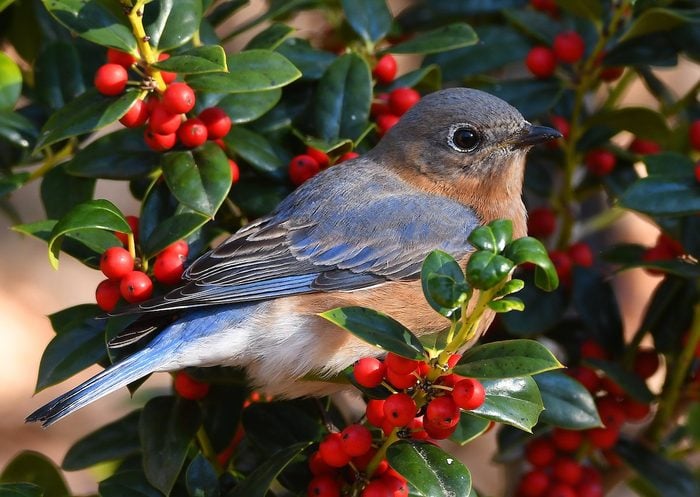
Birders and gardeners know their feathered friends love to feast on holly bushes’ berries. But it’s also worth noting that holly berries, leaves, and bark are all mildly poisonous because they contain theobromine, a substance similar to caffeine. In small amounts this won’t really affect humans, but large amounts can bring on stomach issues and more. In fact, one species of holly native to the southeastern U.S., known as Yaupon holly, has the terrific botanical name Ilex vomitoria. Native Americans even used some of these species in traditional medicines to induce vomiting.
While birds can handle the toxicity of the berries, pets like dogs and cats cannot. It’s best to keep live holly decorations out of your pets’ reach (psst—also hide the mistletoe). If you have curious pets or young children at home, try these pet-friendly indoor plants instead.
Also be cautious when planting holly in your yard if your pets like to snack on your plants. And if you like to snack on your plants, consider planting these edible flowers instead.
Are poinsettias poisonous to cats and dogs?
Bonus Fact: Holly May Protect You From Lightning Strikes

While older cultures happily trimmed holly branches to bring indoors, they felt it was very bad luck to cut down a holly entirely. One popular belief was that the thorns on holly bushes drew lightning, keeping it away from homes and barns. Interestingly, there seems to be some scientific basis to this!
According to the Holly Society, “We now know that the spines on the distinctively-shaped holly leaves can act as miniature lightning conductors, thereby protecting the tree and other nearby objects.” So feel free to prune your holly and cut branches for the holidays, but you might be tempting fate to cut it down entirely!
Next, check out 8 types of Christmas trees you can grow.
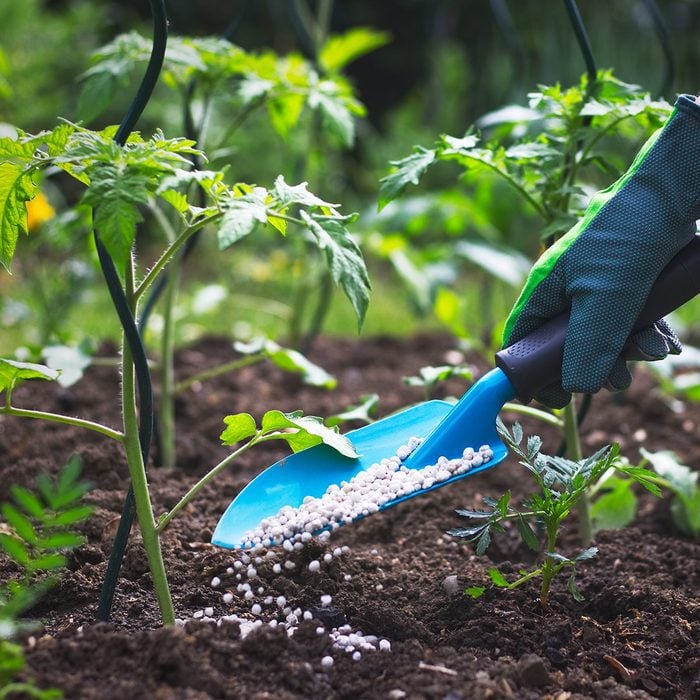
Shopping for plant fertilizer and applying it may seem perplexing at first. Follow these simple tips and you’ll be fertilizing like a pro in no time.
On This Page
Read the Label

The front of every bag contains three numbers, such as 10-10-10 or 10-15-10 or 6-3-0. In order, these represent the percentage of nitrogen, phosphorus in the form of phosphate, and potassium in the form of potash. The rest of the material is filler that dilutes the fertilizer so it’s easier to apply. A balanced fertilizer (formulation 10-10-10 or 12-12-12) may seem suitable for most gardens, but this can lead to excessive levels of phosphorus and potassium, so it’s important to conduct a soil test before choosing a fertilizer.
Many are also labeled as fast- or slow-release, indicating how quickly the nutrients are available to the plant. Fast-release types dissolve in water and are readily available. They are fast-acting and less expensive but pose a greater risk of fertilizer burn and groundwater pollution if misapplied.
Slow-release types deliver small amounts of nutrients for plants to use over time. They have a lower burn potential and require fewer applications, but usually cost more.
Avoid these common mistakes you’re making with your tomato garden.
How to Apply Plant Fertilizer

Drop and broadcast spreaders apply granular fertilizer to large spaces, such as established grassy areas or unplanted large lawns, beds and gardens. In existing gardens, apply when the plants are dry. Brush off any granules that land on leaves. Lightly cultivate and then water, so the fertilizer soaks into the soil.
Use hand-held spreaders for applying granular fertilizer to small or medium-sized gardens. With this technique, fertilize only the plants that need it. Sprinkle on the ground around the base of plants and lightly scratch into the soil with a rake or trowel. Unless steady rain is predicted, water right away.
Psst—discover 19 secrets your landscaper won’t tell you.
How Often to Fertilize Plants
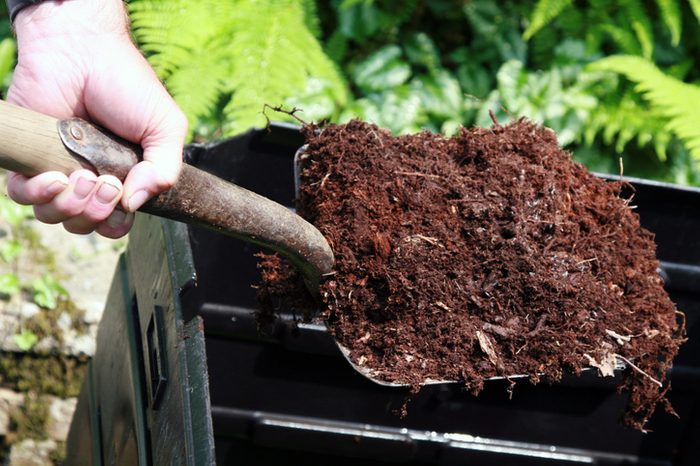
Annuals
Annual plants should be given a low-nitrogen formula. Use 2 to 3 pounds per 100 square feet every season. Use a slow-release fertilizer once, or make three 1-pound applications throughout the growing season. In areas with a long season, a midseason application may be needed.
Ground Covers
Most ground covers need only one spring application of nitrogen-rich fertilizer, but those with flowers and fall color typically don’t.
Perennials
Perennial plants perform best when fertilized in spring with compost or aged manure. Apply 2 inches every two to three years, using additional fertilizer as needed.
Container Plants
For potted plants, add a slow-release type to the soil mix before planting. Every time you water, a little fertilizer is released, providing a steady flow of nutrients. But depending on the growing conditions and number of plants in the container, a midseason boost may be needed. Can you reuse potting soil in planters?
Trees and Shrubs
Avoid over fertilizing trees and shrubs, which often get nutrients from nearby fertilized plantings and lawns.
Learn the 7 things you need to know before planting a tree.
Indoor Plants
Gardening expert Melinda Myers says: Only fertilize houseplants when they’re actively growing, which is in spring and summer for most plants. Limit fertilization from September or October through March, based on your plant’s needs. A monthly application of diluted liquid fertilizer or one application of a slow-release fertilizer in spring is sufficient for most houseplants.
Here’s why your houseplant has brown tips on its leaves.
Lawns
Northern gardeners should apply a low-nitrogen, slow release fertilizer to the lawn before the ground freezes. Southerners growing warm season grasses should apply it four weeks before the first fall frost. Grass puts down roots until the ground freezes, so fertilizing now encourages root growth and reduces the risk of disease.
Get 7 tips for growing a healthy lawn.
Signs of Nutrient Deficiencies

- Nitrogen: Pale green or yellowish lower leaves; slow growth.
- Potassium: Yellow or brown along older leaf edges. May have yellowing between veins, curling or spotting.
- Calcium: Deformed or failed terminal buds and root tips. Results in blossom end rot in peppers and tomatoes.
- Phosphorus: A burned look on leaf tips; dark green or reddish purple older leaves.
- Sulfur: Light green over the entire plant; yellowing of younger leaves.
- Iron: Yellowing between veins of upper leaves leading to an eventual bleached look. Possibility of new leaves being yellowish white.
- Manganese: Paling or yellowing of leaf tissue between veins, followed by spots that occur on middle leaves first
Keep a Record

Stay on top of your plant fertilizer applications by making notes on a calendar.
Next, find out if you should use coffee grounds in the garden.
Do Birds Become Dependent on Bird Feeders?
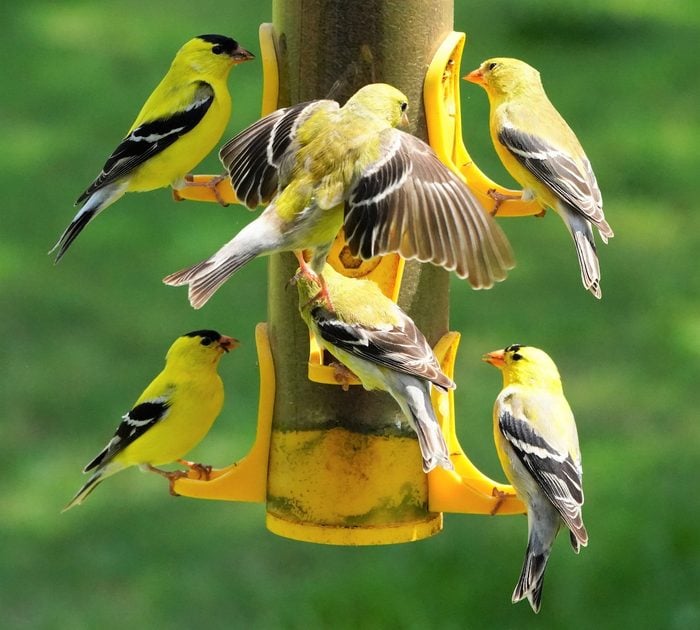
Question: Do birds become dependent on backyard feeders? I would like to hang a bird feeder, but haven’t because I will likely move in a few years. —Ariana Martin of Mountain Home, Idaho
Kenn and Kimberly: Your concern is admirable, but feeding isn’t likely to make birds dependent if you do it in moderation. Studies indicate birds that visit feeders also circulate through the surrounding area, on the hunt for natural foods in addition to backyard offerings. They quickly adapt to changes in the supply. We suggest you go ahead and feed the birds for now. When you get ready to move, reduce the amount of feed gradually: Fill the feeders less often, and put out less at a time. By the time you leave, the local birds will have learned to look elsewhere.
Check out the 10 types of bird feeders you need in your backyard.

Question: Does it harm birds to take down a feeder suddenly? —William Toth of Mechanicsburg, Pennsylvania
Kenn and Kimberly: In general, wild birds adjust quickly if a food source disappears. After all, in nature their food supply can vary from day to day—whether they’re eating insects, fruits, seeds or something else. They have to stay ready to seek new supplies. The birds that visit your feeder are undoubtedly getting food elsewhere too. The only time it’s dangerous to take down feeders abruptly is during extremely cold weather, especially after a storm has coated everything with a layer of ice. In those times, the food you provide may save the lives of many birds.
Next, learn about the best bird feeders and seed for cardinals. Plus, discover budget-friendly ways to attract birds to your yard without breaking the bank.